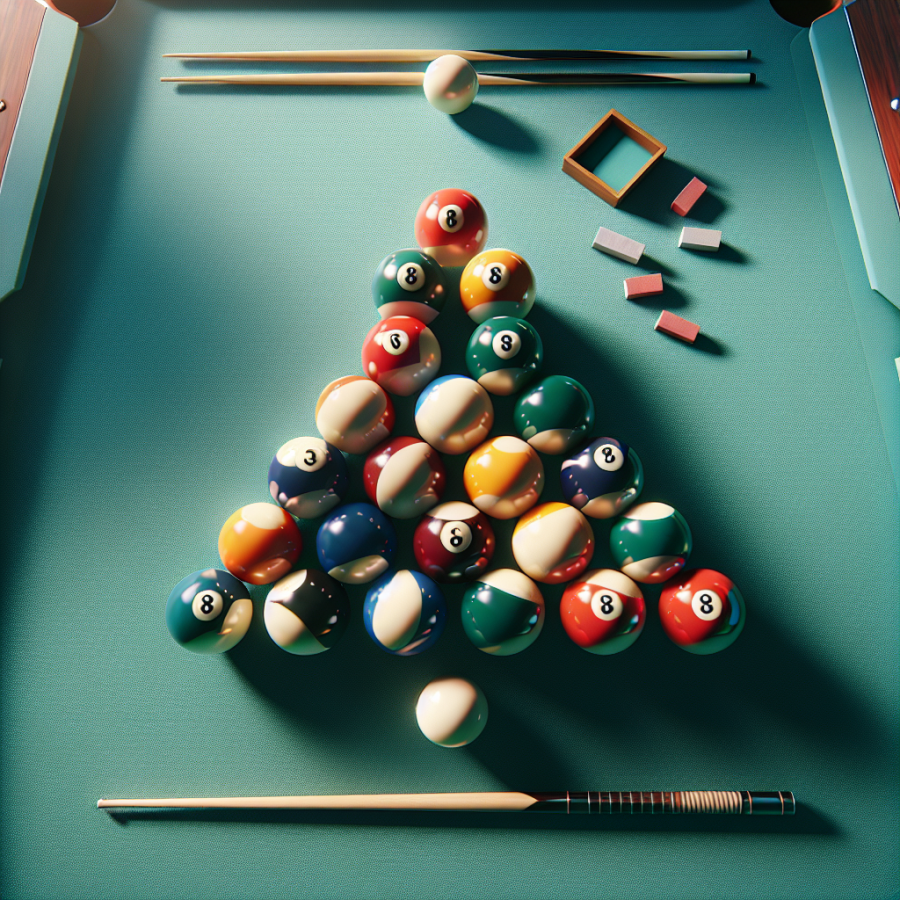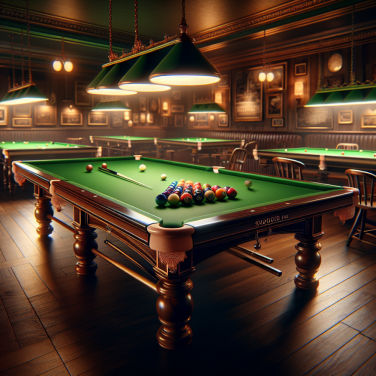Understanding the Fundamentals of Eight-Ball
Before delving into advanced tips and strategies, one must have a solid grasp of the basic rules and objectives of the game. Primarily, the game is divided into two sets of balls - solids (1-7) and stripes (9-15), with the 8-ball being the ultimate target for victory. It is crucial to understand the mechanics of cue ball control, as well as the various angles and spins that can be applied to different shots.
Cue Ball Control and Positional Play
Mastering cue ball control is imperative in setting up for the next shot and navigating through a successful eight-ball game. Efficient positional play involves thinking several shots ahead, ensuring the cue ball lands in a favorable position after each shot. This requires a strong understanding of physics and the effects of spin, which includes top-spin, back-spin, and side-spin, as well as mastering the speed of the cue ball.
Developing a Smart Shot Selection Strategy
Shot selection is a vital component of a winning eight-ball strategy. Knowing when to play offensive shots and when to opt for defensive tactics can significantly affect the game's outcome. A player must evaluate the risk versus reward scenario for each shot, determining if a potential shot is worth taking or if a safety play would be a better option.
Breaking the Rack Effectively
The initial break can set the tone for the game. A strong and effective break that scatters the balls without pocketing the cue ball can provide an immediate advantage. Practice different types of breaks and find one that consistently yields positive results. The key is to not just strike the ball hard but to do so with precision and control.
Mastering the Mental Game
Eight-ball isn't just a physical game; it's a mental one as well. It is crucial to maintain focus, composure, and a positive mindset throughout the match. A player should be observant of their opponent's strengths and weaknesses and adjust their game plan accordingly. Confidence is key, but overconfidence can be detrimental. Staying mentally sharp will allow you to capitalize on your opponent's errors and maintain control of the table.
Perfecting Bank and Kick Shots
Bank and kick shots are essential when faced with a table where direct shots are not possible. These types of shots bounce the cue or object ball off a rail to reach the intended target. Mastering these shots increases a player's arsenal and can often be the difference between victory and defeat in tight situations.
Read also:
Global Dominance on Ice: Which Country Reigns Supreme?
Maximizing Your Ball Control: Advanced Positioning Techniques
Improving ball control is pivotal when mastering the game of eight-ball. It involves fine-tuning your positioning to set yourself up for a perfect shot sequence, reducing the distance the cue ball must travel, and minimizing the chance of committing fouls. By honing advanced techniques, you will be able to take your game to a professional level.
One crucial aspect of ball control is understanding the angles and spin. Precise application of side spin (english) can drastically alter the cue ball's path after it strikes your target ball, allowing you to position the cue ball for your next shot. The key to perfecting side spin is consistency in your stroke and cue placement. Practice by setting up straight shots and varying your side spin to see the different outcomes.
Another technique to enhance your ball control is mastering the stop shot, which is where the cue ball stops dead upon impact with the target ball. This shot is perfect when your next ball is close to the pocket. On a stop shot, the cue ball should hit the target ball full in the face at a pace that absorbs the impact, requiring a firm, precise stroke.
The follow shot, on the other hand, is used when you need the cue ball to roll forward after hitting the target ball. By striking the cue ball above its center, you can ensure that it continues to roll post-impact — ideal for lining up shots where your next target is further down the table.
Conversely, the draw shot is when you want the cue ball to come back towards you after striking the target ball. Striking below the center causes backspin, and controlling this spin can bring the cue ball back to a desired position for the subsequent shot.
Another technique to master is using the rails effectively. Knowledge of rail geometry and the ability to use the cushions to navigate around the table can greatly increase your ball positioning options. Practice rail shots by hitting the cue ball at different speeds and angles and observe how it rebounds off the cushions – this will enable you to predict the path of the cue ball more accurately and use the rails to your advantage.
Controlling the speed of the cue ball is often overlooked by novices but is critical for professionals. Soft finesse shots can be used when little movement is needed, whereas a harder hit may be required to traverse the table for a distant shot. The ability to judge the required power comes from experience and many hours of practice.
Finally, practice drills can be a game-changer.
Winning Formulas: Psychological Strategies and Opponent Analysis
Winning Formulas: Psychological Strategies and Opponent Analysis
To master the art of eight-ball, players must go beyond the physical aspects of the game and enter the realm of psychological warfare and opponent analysis. This dimension of the game can often be the differentiator between good and great players. Recognizing patterns in opponent behavior, understanding the psychological nuances of competition, and using this information strategically can give you a significant edge.
One of the most critical psychological strategies is maintaining a positive and confident demeanor. Your body language and attitude can have a significant impact, not only on your own performance but also on how your opponent perceives you. When you exude confidence, it can intimidate your opponent and cause them to doubt their abilities. Conversely, when you appear nervous or uncertain, a perceptive opponent might capitalize on that weakness. Thus, it's important to practice confidence-inducing routines and self-talk that keep you focused and assertive at the table.
Another tactic involves paying close attention to your opponent's behavior and style of play. Are they aggressive or conservative? Do they take risks, or do they play it safe? Analyzing their strategy can inform you of their level of confidence and experience, allowing you to adjust your game accordingly. For instance, against a conservative player, you might adopt a more aggressive strategy to push them out of their comfort zone, whereas, against an aggressive player, you might play more defensively and wait for them to make an error.
Emotional control is another critical aspect. The nature of eight-ball means that the tide can turn at any moment, so keep your emotions in check, whether you're leading or trailing. Losing your cool can lead to impulsive decisions and unforced errors, so practice techniques such as deep breathing or visualization to stay calm and focused under pressure.
Understanding the psychological principle of ‘tilt’ — a state of emotional frustration that leads to poor decision-making — is important. Identify the signs that you or your opponent are tilting. If you spot these signs in your opponent, you can adjust your strategy to maintain pressure on them, further influencing their mental state.
Moreover, consider the power of a strategic 'safety play.' This can not only impede your opponent's progress but can also lead them to feel pressured or trapped, which might increase their likelihood of making mistakes, especially if they lack patience or solid defensive techniques.
Remember to couple psychological strategies with an in-depth opponent analysis.




